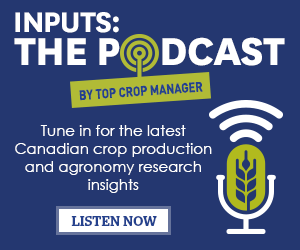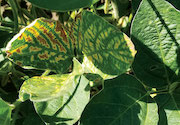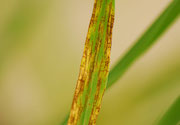| |
| |
 |
 |
| |
 |
|
@{mv_date_MMM d, yyyy}@ |
|
| |
Post-harvest is a good time to engage in soil management practices like applying manure and seeding cover crops. One practice that might appeal to those with severe compaction problems is subsoiling.
» Read more...
The Government of Canada has increased total AgriRecovery funding to up to $500 million to address extraordinary costs faced by producers due to drought and wildfires – an increase from the $100 million announced on Aug. 6.
» Read more...
The fund will provide direct support to farmers to adopt beneficial management practices that store carbon and reduce GHG emissions in cover cropping, nitrogen management, and rotational grazing practices.
» Read more...
|
| |
|
| |

You’ve collected your farm data through the season – but as harvest approaches, how can you ensure you’re set up for success? Good data in is good data out, and in this episode, Chapin Bell, Climate Business Manager for FieldView in Manitoba and southern Saskatchewan, breaks down how you can put your data to work at harvest time. Bell shares pre-harvest best practices, like ensuring your apps and equipment are compatible, and tips to understand what your data is telling you.
» Listen now... |
| |
|
| |
 With a dash of serendipity mixed into their scientific studies, AAFC researchers in Harrow, Ont., have made a fascinating discovery: a field with soil that naturally suppresses soybean sudden death syndrome. This discovery could be the first step toward adding a new tool to the small toolbox available for managing this yield-limiting disease, according to Owen Wally, crop pathologist and research lead.
» Learn more
With a dash of serendipity mixed into their scientific studies, AAFC researchers in Harrow, Ont., have made a fascinating discovery: a field with soil that naturally suppresses soybean sudden death syndrome. This discovery could be the first step toward adding a new tool to the small toolbox available for managing this yield-limiting disease, according to Owen Wally, crop pathologist and research lead.
» Learn more |
| |
 For years, Ascochyta blight in chickpea has served as the textbook example of fungicide insensitivity. But recently, the Prairie pathogen world has become more inclusive, with fungicide-resistant populations detected in other crops like lentils, barley and peas. Randy Kutcher, a University of Saskatchewan professor, identifies several factors contributing to the rising risk and incidence of fungicide insensitivity.
» Learn more
For years, Ascochyta blight in chickpea has served as the textbook example of fungicide insensitivity. But recently, the Prairie pathogen world has become more inclusive, with fungicide-resistant populations detected in other crops like lentils, barley and peas. Randy Kutcher, a University of Saskatchewan professor, identifies several factors contributing to the rising risk and incidence of fungicide insensitivity.
» Learn more |
| |
|
| |
|
|
| |
| |





